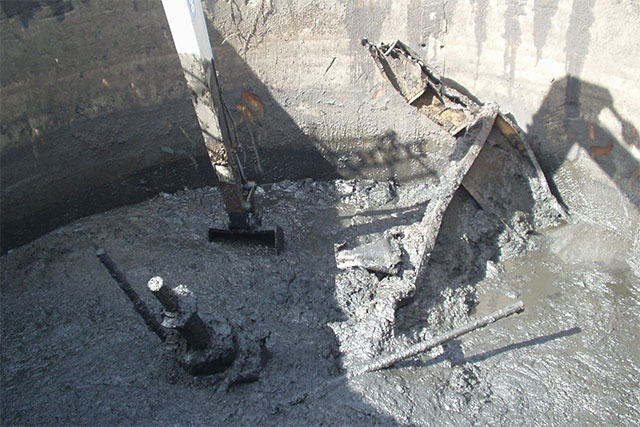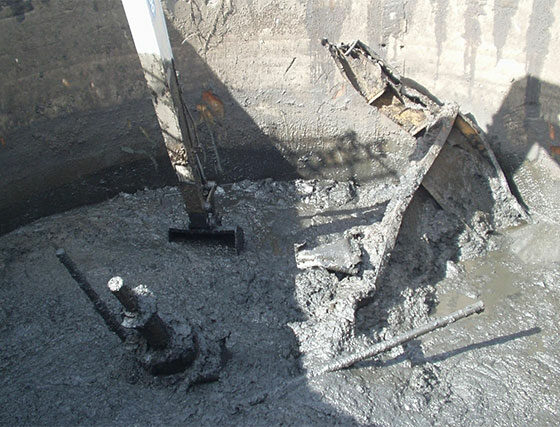Stabilisation should facilitate the re-use of soils, removing disposal and subsequent material replacement costs.
Stabilisation treatment can give 2 benefits, removing the risk from contaminated ground, and improved geotechnical competency of the ground. Environmental stabilisation is quite different to geotechnical stabilisation, although they are both often confused because they can be closely linked.

What is Stabilisation
Soil stabilisation come in 2 main forms, stabilisation and Solidification. On the surface you won’t notice a difference, in practice they’re quite different-
Stabilisation involves the stabilisation of the contaminant in the ground. This often is designed to change the contaminant from a dangerous form in to a less dangerous form.
Solidification involves reducing the mobility of the contaminant i.e. locking the contaminant in place to it can’t reach any receptors.
The Science behind it!
Stabilisation and solidification, we’ll discuss both as ‘STABILISATION’ below.
Stabilisation relies on the addition of immobilizing agents which reduce a contaminants leachability and bioavailability, this can be achieved using one of the following processes:
adsorption to mineral surfaces,
formation of stable complexes with organic ligands,
surface precipitation and ion exchange;
precipitation as salts
The stabilisation processes are influenced by many factors: pH, redox potential, soil organic matter content, cation exchange capacity, sulphides content etc,
Treatment Applications
Stabilisation techniques have been used for treating a wide range of inorganic contaminants and some organic contaminants, including:
metals and metalloids;
asbestos;
radionuclides;
inorganic corrosives;
inorganic cyanides;
solid organics (e.g. plastics, resins, tars);
polychlorinated biphenyls (PCBs);
polyaromatic hydrocarbons (PAHs); and
dioxins.
Treatability study
The selection of immobilizing agent depends on several factors such as, the type of contaminant, the initial contamination levels, the chemical-physical characteristics of the soil as well as the required target reduction. Thus a treatability study should be undertaken in order to demonstrate the efficiency of the potential suitable binders before finalising the design for full-scale implementations.
Application
Stabilisation can be performed either in situ (in the ground) or ex situ (out of the ground) often depending on the aim of the stabilisation process as well as the regulatory program under which the work is performed.
Advantages and disadvantages of soil stabilisation
Advantages
the contaminant can be stabilised in a relatively short time period
stabilisation can be used to treat persistent contaminants (e.g. heavy metals, PCBs, dioxins)
can be performed both in-situ or ex-situ
process equipment can occupy a relatively small footprint
the structural properties of the soil may be improved by treatment (e.g. strength, permeability)
the stabilised soil can be reused for construction applications or disposed of in a landfill for inert wastes
much greater cost certainty than the most other remediation options
Disadvantages
does not destroy or remove the contaminants
can be difficult to predict long-term behaviour
may require long-term maintenance of protection systems and/or long-term monitoring.
potentially significant final volume increase



